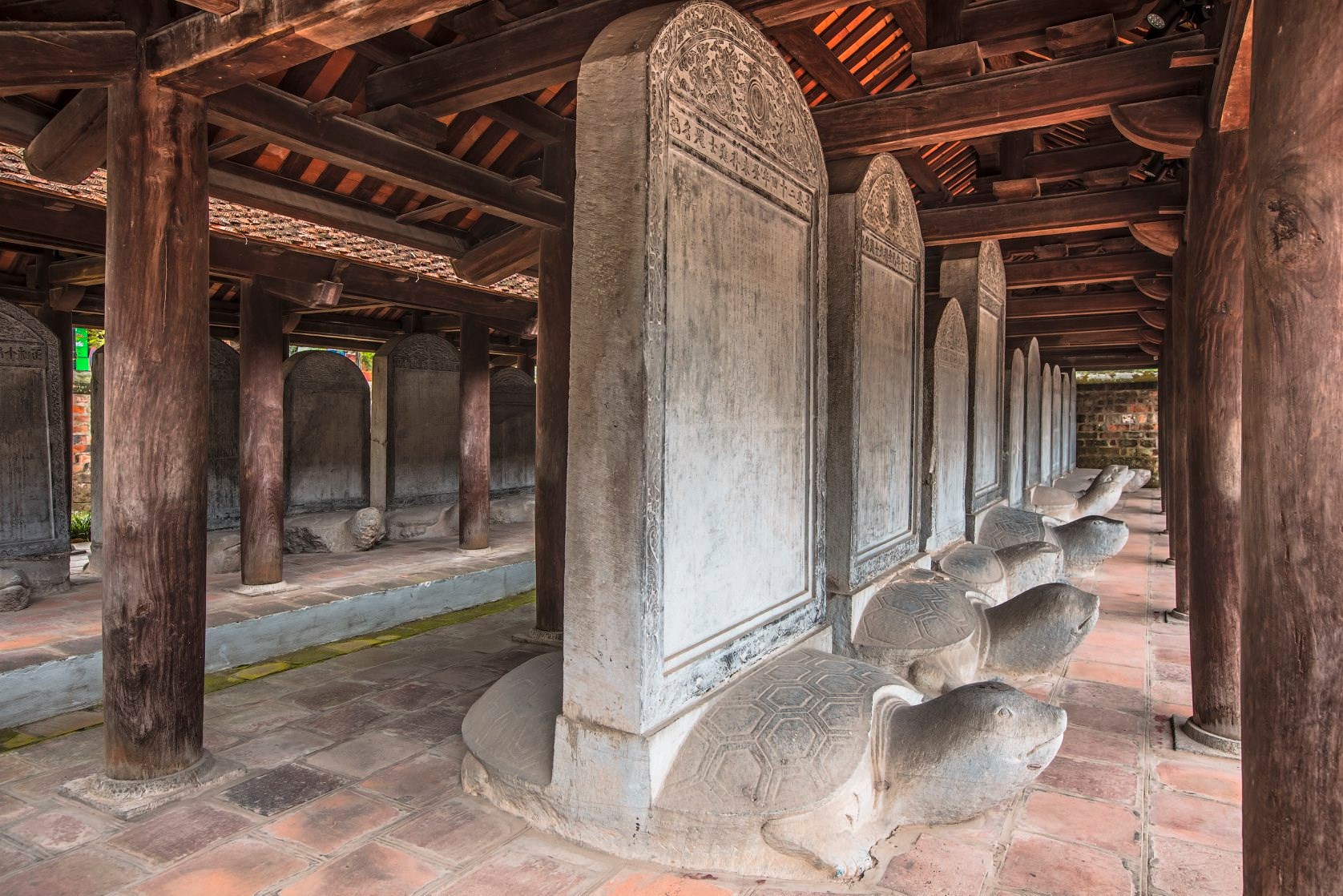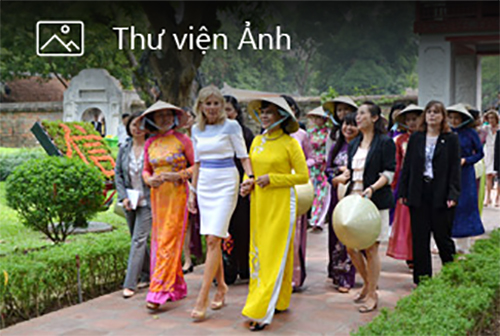DOCTORAL LAUREATE’S STELE - THE VALUABLE RESOURCES ABOUT HISTORY OF VIETNAMESE EDUCATION

Today, when visiting the Special National Landmark Van Mieu - Quoc Tu Giam, visitors get a better view of the 82 doctoral’s stele which preserve the names and native places of 1,304 graduates of 82 royal exams (81 exams held by Le dynasty and one exam held by Mac dynasty) held from 1442 to 1779. These 82 stone steles were inscribed on the Asia-Pacific Memory of the World Register in 2010 and the International Memory of the World Register in 2011.
The history of Vietnamese education, Confucian teaching and learning in our country dates back to the Ly dynasty, and was further developed through the Tran and Ho dynasties. Under the Le dynasty, Confucian teaching resulted in training thousands of talented men for the country. The text for the stele of the first examination held in the 3rd year of the reign of Dai Bao (1442) was composed by the academician Than Nhan Trung (Title: Han lam vien Thua chi, Dong cac Dai hoc si) affirms: “Virtuous and talented men are the essence of the State’s vitality”. It was always considered the guideline for education of many dynasties.
The stele not only show the way of using talents, the content on the stele also teaches lessons and reminds the talented men the responsibility to the country: The text for the stele of the first examination held in 1487 states: “Whose names appear on this stone are very lucky! They should try their best to make their fame match their abilities”; The text for the stele of the first examination held in 1514 states: “They should become ‘auspicious clouds, stars, shining gems and pure gold’ for the nation”; The text for the stele of the first examination held in 1577 states: “If any of the laureates uses the honors he has gained to seek wealth and credit from the mandarinate, posterity will surely criticize him as an evil, mean man who brings disgrace on our education system”.
The text on the stele records the names and homelands of the laureates, the names and the titles of the text composer, editor, calligrapher and the time of the stele erection, the names of examination executives, examiners, and dates of Royal examination, the date of hanging the board written names who passed Royal exams… Based on that information, we can assess the situation of educational development under the Le and Mac dynasties.
The number of candidates attending the examination steadily rose over a period of one thousand years showing an interest in the education of the State and the society. In 1442, 450 men participated in the examination process; in 1448, there were 750 participants; in 1475 there were 3000 participants, and in 1640 there were 6000 men taking the exam.
However, the examination process was rigorous. Even though there was a steady increase in the number of men taking the exam, there was not an increase in the number of men who passed the exam. The candidates' quality requirements were disregarded. The text on the stele states: The number of men who passed the exam in one examination was 62 people (exam in 1478), and at least there were only 3 men passed (exam in 1592, 1667).
Of the 1304 graduates who were listed on the Doctorate laureate’s stalea, many later became social and political activists, famous culturalists who left behind many valuable works for future generations. Thus, 82 stone steles at Van Mieu - Quoc Tu Giam vividly reflect the educational history of our country from the 15th to the 18th centuries.
Writer: N.H
Translator: Thu Huong














 Guide to finding the way
Guide to finding the way
